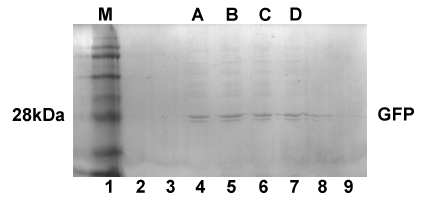Team:USTC CHINA/Project/Results
From 2013.igem.org
(Difference between revisions)
| (4 intermediate revisions not shown) | |||
| Line 4: | Line 4: | ||
<link rel="stylesheet" type="text/css" href="https://2013.igem.org/Team:USTC_CHINA/main.css?action=raw&ctype=text/css" /> | <link rel="stylesheet" type="text/css" href="https://2013.igem.org/Team:USTC_CHINA/main.css?action=raw&ctype=text/css" /> | ||
<link rel="stylesheet" type="text/css" href="https://2013.igem.org/Team:USTC_CHINA/pro.css?action=raw&ctype=text/css" /> | <link rel="stylesheet" type="text/css" href="https://2013.igem.org/Team:USTC_CHINA/pro.css?action=raw&ctype=text/css" /> | ||
| + | |||
</head> | </head> | ||
<body background="https://static.igem.org/mediawiki/2013/6/62/2013ustc-china_Light_grey_bg.png"> | <body background="https://static.igem.org/mediawiki/2013/6/62/2013ustc-china_Light_grey_bg.png"> | ||
| Line 63: | Line 64: | ||
<h1>Stage One:Basic Experiments</h1> | <h1>Stage One:Basic Experiments</h1> | ||
<h2>Introduction</h2> | <h2>Introduction</h2> | ||
| - | <p align="justify">As the construction and concentration of recombinant plasmid rely heavily on E.coli system in current molecule experiment protocols of B.subtilis, B.subtilis acts only as the secretory expression vector. Therefore, to verify the practicality of our locus and the transdermal function of recombinant transdermal protein on top of its original functions, we conducted basic experiments on E.coli to verify our assumptions.</p> | + | <p align="justify">As the construction and concentration of recombinant plasmid rely heavily on <i>E.coli </i>system in current molecule experiment protocols of <i>B.subtilis</i>, <i>B.subtilis</i> acts only as the secretory expression vector. Therefore, to verify the practicality of our locus and the transdermal function of recombinant transdermal protein on top of its original functions, we conducted basic experiments on <i>E.coli</i> to verify our assumptions.</p> |
<p align="justify">The following figure shows the stages of our basic experiments:</p> | <p align="justify">The following figure shows the stages of our basic experiments:</p> | ||
<div align="center"><img src="https://static.igem.org/mediawiki/2013/d/d0/Basal_phase.png" width="300" height="400"/></div> | <div align="center"><img src="https://static.igem.org/mediawiki/2013/d/d0/Basal_phase.png" width="300" height="400"/></div> | ||
| Line 71: | Line 72: | ||
<h2>Results</h2> | <h2>Results</h2> | ||
<h3>1. Verifying the Validity of Our Circuit by GFP</h3> | <h3>1. Verifying the Validity of Our Circuit by GFP</h3> | ||
| - | <p align="justify">E.coli BL21 proved that the standard transdermal locus does work with GFP.</p> | + | <p align="justify"><i>E.coli<i> BL21 proved that the standard transdermal locus does work with GFP.</p> |
<img src="https://static.igem.org/mediawiki/igem.org/7/77/2013ustc-china_gfp_xianlu.12.png" width="580" height="125"/> | <img src="https://static.igem.org/mediawiki/igem.org/7/77/2013ustc-china_gfp_xianlu.12.png" width="580" height="125"/> | ||
| - | <p align="justify">Using GFP to prove the validity of a newly designed circuit is a classical way to verify the expressing of this circuit. As expressions in E.coli involve neither secretory nor sequential problems, we hoped to verify the practicality of our locus by the expression of TD1-GFP. Thus we selected pET22b, which is a common recombinant vector for plasmid construction, as our recombinant vector and E.coli BL21 as engineered bacteria. We fused sequence TD1-GFP with T7 promoter from pET22b downstream and succeeded in expressing fusion protein TD1-GFP.</p> | + | <p align="justify">Using GFP to prove the validity of a newly designed circuit is a classical way to verify the expressing of this circuit. As expressions in <i>E.coli</i> involve neither secretory nor sequential problems, we hoped to verify the practicality of our locus by the expression of TD1-GFP. Thus we selected pET22b, which is a common recombinant vector for plasmid construction, as our recombinant vector and <i>E.coli</i> BL21 as engineered bacteria. We fused sequence TD1-GFP with T7 promoter from pET22b downstream and succeeded in expressing fusion protein TD1-GFP.</p> |
<div class="atfigure" align="center"><img src="https://static.igem.org/mediawiki/2013/d/d7/2013ustc-chinajiaotuTD1-GFP.jpg"></br></br> | <div class="atfigure" align="center"><img src="https://static.igem.org/mediawiki/2013/d/d7/2013ustc-chinajiaotuTD1-GFP.jpg"></br></br> | ||
Fig1. SDS PAGE shows the molecule weight of TD1-GFP</div> | Fig1. SDS PAGE shows the molecule weight of TD1-GFP</div> | ||
| Line 92: | Line 93: | ||
<div class="basic-bar"> | <div class="basic-bar"> | ||
<h3 style="font-size:24px;line-height:20px;">2. TD1 Fusion Protein Expression</h3> | <h3 style="font-size:24px;line-height:20px;">2. TD1 Fusion Protein Expression</h3> | ||
| - | <p align="justify">The expression of recombinant antigen and adjuvant in E.coli BL21.</p> | + | <p align="justify">The expression of recombinant antigen and adjuvant in <i>E.coli</i> BL21.</p> |
<img src="https://static.igem.org/mediawiki/2013/4/4d/2013ustc-china_genecircuit.png" width="580" height="120"/> | <img src="https://static.igem.org/mediawiki/2013/4/4d/2013ustc-china_genecircuit.png" width="580" height="120"/> | ||
<p align="justify">The practicality of our circus afforded by TD1-GFP enabled our to express recombinant antigen TD1-HBsAg and recombinant adjuvant TD1-LTB successfully. So far our basic molecule experiments have ended with perfection.</p> | <p align="justify">The practicality of our circus afforded by TD1-GFP enabled our to express recombinant antigen TD1-HBsAg and recombinant adjuvant TD1-LTB successfully. So far our basic molecule experiments have ended with perfection.</p> | ||
Latest revision as of 12:30, 28 October 2013
 "
"



 Fig1. SDS PAGE shows the molecule weight of TD1-GFP
Fig1. SDS PAGE shows the molecule weight of TD1-GFP






